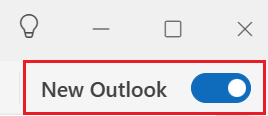Esporta o esegui il backup dei contatti, del calendario, delle email e delle attività
Create an Outlook backup file to save and export email messages, contacts, calendar info and tasks. Then import your backup to a new email plan, email service or a new version of Outlook. The export won’t include meta-data such as folder properties (views, permissions and AutoArchive settings), message rules and blocked sender lists. Please note that Microsoft no longer supports versions of Outlook older than 2016.
Seleziona la scheda appropriata in base alla piattaforma email che stai utilizzando.
- Accedi a Outlook sul web. Usa il tuo indirizzo email Microsoft 365 e la password (il tuo username e la tua password GoDaddy qui non funzionano).
- A sinistra, seleziona
 Persone.
Persone. - Seleziona Gestisci contatti, quindi Esporta contatti.
- Scegli se desideri esportare tutti i contatti o soltanto quelli di una determinata cartella, quindi seleziona Esporta.
Your contacts will be saved as a .csv file, which you can import to other email apps (like Gmail) or other versions of Outlook.
- Apri Outlook.
- If you’re in new Outlook, revert to classic Outlook. In the upper-right corner, turn off the New Outlook toggle. You might have to confirm that you want to revert.

- Nell'angolo in alto a sinistra, seleziona File.
- SelezionaApri ed esporta, quindi Importa/Esporta.
- Seleziona Esporta in un file, quindi Avanti.
- Seleziona File di dati di Outlook (.pst), quindi Avanti.
- To export the entire mailbox, select the name of the email account, and then continue to the next step. Or, to only export your calendar, contacts or tasks, select the folder you want to export. You can only export 1 type at a time, so you must repeat these steps to export contacts, calendars and tasks individually.
- Next to Include subfolders, make sure the checkbox is selected, and then select Next.
- To choose where to save the Outlook Data File (.pst), select Browse. Enter a file name, and then select OK.
- If you're exporting to an existing Outlook Data File (.pst), under Options, specify what to do when exporting items that already exist in the file.

- Seleziona Fine.
- The export begins immediately unless 1 of the following scenarios apply:
- When the Create Outlook Data File dialog appears, enter a password in Password and Verify Password, and then select OK. Otherwise, to continue without setting up a password, leave the password fields blank, and then select OK.
- If you're exporting to an existing Outlook Data File (.pst) that's password protected, in the Outlook Data File Password dialog, enter the password, and then select OK.
- Apri Outlook.
- If you're in the new version of Outlook, revert to the legacy version of Outlook. Select Outlook, and then Legacy Outlook. You might have to confirm that you want to revert.

- Seleziona File, quindi Esporta. Si aprirà la finestra Esporta in un file di archivio (.olm).
- If you don't see Export, select Tools, and then Export instead.
- Select what you want to export. By default, all items are selected.
- To export any of these types individually, select the checkbox next to each item.

- Seleziona Continua .
- Choose where on your computer you'd like to save the file, enter a file name, and then select Save. Your items will be exported.
- Seleziona Fine.
Passaggio correlato
- Dopo avere esportato i tuoi dati di Outlook in un file di backup, puoi importarli in Outlook.
Ulteriori informazioni
- Find out how to export a calendar to a .ics file from Microsoft.
- Per maggiori informazioni su come esportare e importare file in Outlook, consulta il sito di Microsoft.
- Check out this article from Apple to learn how to import or export mailboxes in Apple Mail on Mac.